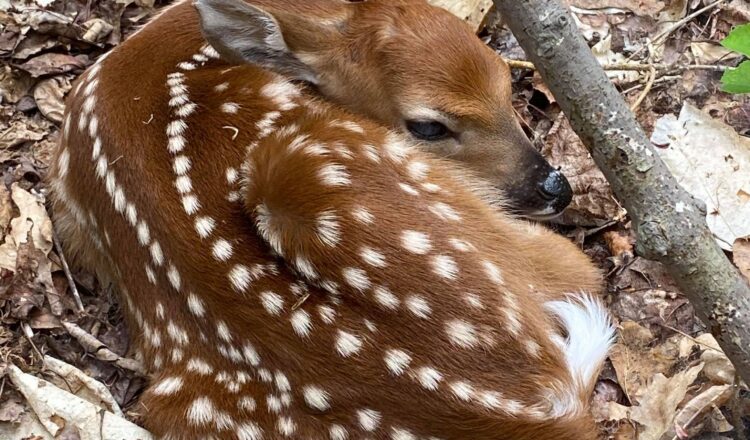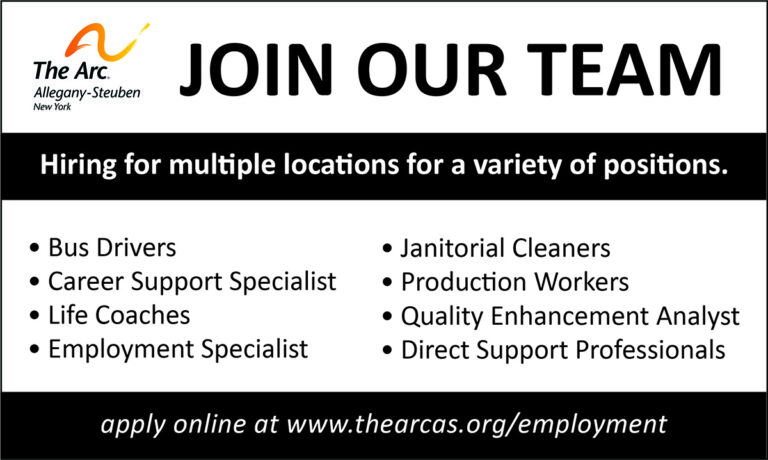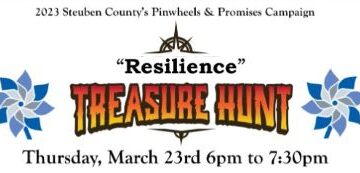By Andrew Harris, photo by John, Amber, Mariah, Bailey, and Blake Beyer of Wheatfield NY.
It’s that time of year again!! The young of the year are appearing and if you are out and about, or even in the front yard, you are likely to cross paths with a wild newborn. Just now, on a group walk through the forest headquarters of this site, a fawn born hours before lay motionless, only a few feet off the trail. As one of our humans quietly got closer, the fawn still didn’t move a muscle. “Is it dead?” is almost always the first natural reaction to something so vulnerable and motionless.
Nature writer, Bob Confer, reminds us that fawn season doesn’t end until early July:
“If you see a fawn alone don’t call the NYSDEC or 911. Its mother didn’t abandon it or get hit by a car. She’s feeding and will come back to nurse. This happens for some time: Although by Week 2 fawns’ diets begin a transition to plants they don’t stop nursing until Week 5.”
Nine times out of ten, the new fawn is just fine and just doing what instinct demands: Keep a low profile until her doe returns. That ten percent of the time the fawn may not be ok, or her doe has suddenly died(or refused the fawn). In either circumstance, it is almost always the same: LEAVE THE BABY DEER ALONE AND WHERE YOU FOUND IT.
The same general rule applies to baby birds who are fledging from the nest. Trust me, human intervention with baby birds almost always leads to death. Only a small percentage of fledges survive, just as only about half of fawns survive, and that is simply the cruel, yet perfect natural order. LEAVE THE BABY BIRD ALONE AND WHERE YOU FOUND IT.
Turtles are one of the only wild creatures that the rule is different when road crossings are concerned. You’ve probably come across the turtle trying to cross the road, a dangerous journey that is a nesting activity. Typically the turtle in the road is either on the way to lay eggs, or returning from laying eggs. It is almost always a ’round trip’, one way to lay the eggs and one way back to the preferred habitat. SAFELY WAIT FOR THE TURTLE TO CROSS THE ROAD. Pull over, put your four way flashers on and hope other drivers take note. If you are comfortable with turtles, and understand the turtle may well be an Eastern Snapping Turtle(they bite very hard), then help move the turtle in the direction it is going. Do not get yourself or others killed trying to save turtles in the road, please.
Of course what if you watch the mother of the fawn be hit by a car? What if a sharp-shinned hawk destroys a robin nest and only one fledge survives? What if the turtle has already been hit by a car but isn’t mortally wounded? In such cases any citizen may act to protect the life of the wild creature but must immediately contact a licensed wildlife rehabilitator. Keeping wild animals at home and failing to consult a licensed professional can get you into deep legal trouble. Here is the list of NYS Wildlife Rehabilitators.






